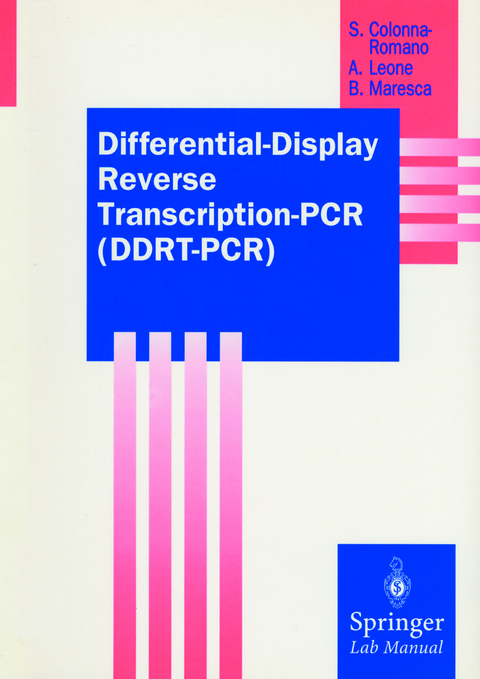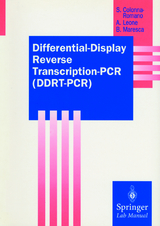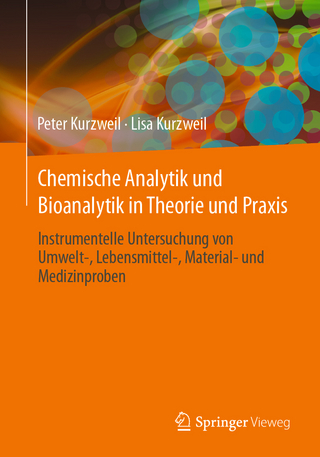Differential-Display Reverse Transcription-PCR (DDRT-PCR)
Springer Berlin (Verlag)
978-3-540-63297-9 (ISBN)
Recently, a new approach has successfully been developed: Differential-Display Reverse Transcription-PCR (DDRT-PCR). This technique has been proven to be highly effective in identifying sequences that are differentially expressed in various cell types. The most striking advantage is, however, that only nanograms of total RNA are sufficient. Thus every mRNA species expressed in the cell system can be investigated, even those present at very low levels.
Overview.- 1 Differential Display of mRNAs: Principles and General Applications.- 2 DDRT-PCR: A Brief Description.- 3 Summary.- 1 Preparation of Total RNA.- 1.1 Extraction from Yeast by Phenol.- 1.2 Extraction by Guanidine Thiocyanate, Plant Tissue.- 1.3 Extraction by Guanidine Thiocyanate, Animal Cells.- 1.4 Extraction from Fish Liver.- 1.5 RNA Quantification.- 1.6 DNase Treatment.- 1.7 Verification of Integrity.- 2 Differential Display.- 2.1 Reverse Transcription of Total RNA.- 2.2 PCR Amplification.- 3 Size Separation of cDNA Fragments.- 3.1 Gel Electrophoresis.- 3.2 End Labeling of DNA Markers.- 4 Isolation of Differentially Expressed cDNA Fragments.- 4.1 Alignment of a Differential-Display Gel Using a Film Image.- 4.2 Elution of cDNA Fragments from Gel.- 5 Reamplification of Eluted cDNA.- 6 Cloning of Amplified cDNA Fragments.- 6.1 Purification of cDNA Fragments from Agarose.- 6.2 Ligation of cDNA into Vectors.- 6.3 Preparation of CaCl2 Competent Cells for Transformation.- 6.4 Preparation of Electrocompetent Cells.- 6.5 Transformation of CaCl2 Competent Cells.- 6.6 Transformation of Competent Cells by Electroporation.- 7 Checking Subcloned Fragments.- 8 Confirmation of Differential Expression of Cloned cDNA Fragments.- 8.1 Slot and Northern Blots.- 8.2 DNA Labeling and Hybridization.- 8.3 Ribonuclease Protection Assay.- 8.4 Nuclear Run-On Assay.- 9 Northern Blot Affinity Capturing of cDNA.- 9.1 PCR Labeling of Differentially Expressed cDNA.- 9.2 Northern Blot Affinity Capturing.- 10 Sequencing of Differentially Expressed cDNA Fragments.- 10.1 Plasmid DNA Preparation.- 10.2 Sequencing Reaction with Sequenase Version 2.0 T7 DNA Polymerase.- 10.3 Sequencing Reaction with Thermo-Sequenase Cycle-Sequencing Kit.- Materials, Equipment, Reagents, and Suppliers.- References.
| Erscheint lt. Verlag | 23.1.1998 |
|---|---|
| Reihe/Serie | Springer Lab Manuals |
| Zusatzinfo | X, 124 p. 74 illus. |
| Verlagsort | Berlin |
| Sprache | englisch |
| Maße | 155 x 235 mm |
| Gewicht | 262 g |
| Themenwelt | Naturwissenschaften ► Biologie ► Biochemie |
| Naturwissenschaften ► Biologie ► Mikrobiologie / Immunologie | |
| Naturwissenschaften ► Biologie ► Zellbiologie | |
| Schlagworte | Differentiation • DNA • Gen-Analyse / Genom-Analyse • Gene • genes • molecular genetics • Molekulargenetik • mRNA • PCR • RNA • transcription • Zelldifferenzierung |
| ISBN-10 | 3-540-63297-2 / 3540632972 |
| ISBN-13 | 978-3-540-63297-9 / 9783540632979 |
| Zustand | Neuware |
| Haben Sie eine Frage zum Produkt? |
aus dem Bereich




